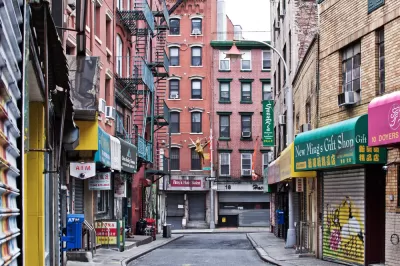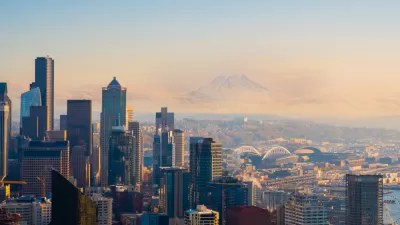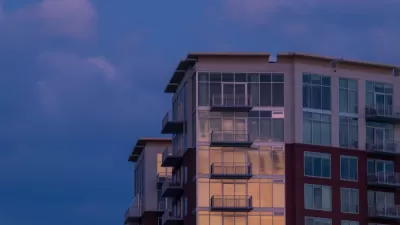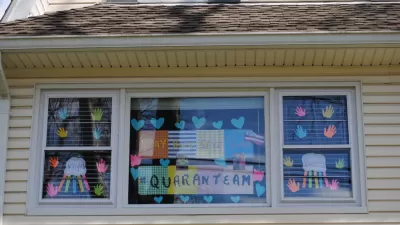Large numbers of commercial renters in New York City are missing rent, according to reports.

"Across New York City, commercial tenants are falling behind in rent at unprecedented rates as the coronavirus outbreak has caused a nearly complete lockdown of the city for two months," reports Mathew Haag.
While Haag doesn't share citywide statistics to illustrate the scope of the problem, several organizations in the city have large sample sizes to report. For instance, the Community House Improvement Program, which represents around 4,000 landlords of rent-stabilized apartment buildings, reported that among its members who also have commercial tenants, "two-thirds of those tenants did not pay rent in April and May." (That figure compares to 25 percent of residential tenants missing rent in the same group.)
Moreover, "Vornado Realty Trust, one of the city’s biggest commercial landlords, said that nearly all its retail clients with the exception of grocery stores and other essential businesses have sought financial relief, such as a deferral on rent payments," reports Haag.
According to Haag, the number of commercial renters falling behind outpaces the residential rental market, which faces its own crisis of deferred payments, and the entire commercial market is at a breaking point. The effects of the worsening crisis for commercial renters could have catastrophic consequences for the city.
If building owners cannot come up with enough money to pay their next property tax bill in five weeks, a deadline the city has refused to postpone, the city will be starved of an enormous revenue stream that helps pay for all aspects of everyday life, from the Fire Department to trash pickup to the public hospitals. It could lead to a bleak landscape of vacant storefronts and streets sapped of their energy.
FULL STORY: New Threat to New York City: Commercial Rent Payments Plummet

Study: Maui’s Plan to Convert Vacation Rentals to Long-Term Housing Could Cause Nearly $1 Billion Economic Loss
The plan would reduce visitor accommodation by 25,% resulting in 1,900 jobs lost.

North Texas Transit Leaders Tout Benefits of TOD for Growing Region
At a summit focused on transit-oriented development, policymakers discussed how North Texas’ expanded light rail system can serve as a tool for economic growth.

Using Old Oil and Gas Wells for Green Energy Storage
Penn State researchers have found that repurposing abandoned oil and gas wells for geothermal-assisted compressed-air energy storage can boost efficiency, reduce environmental risks, and support clean energy and job transitions.

Private Donations Propel Early Restoration of Palisades Playground
Los Angeles has secured over $1.3 million in private funding to restore the Pacific Palisades playground months ahead of schedule, creating a modern, accessible space that supports community healing after recent wildfires.

From Blight to Benefit: Early Results From California’s Equitable Cleanup Program
The Equitable Community Revitalization Grant (ECRG) program is reshaping brownfield redevelopment by prioritizing projects in low-income and environmental justice communities, emphasizing equity, transparency, and community benefits.

Planting Relief: Tackling Las Vegas Heat One Tree at a Time
Nevada Plants, a Las Vegas-based nonprofit, is combating the city’s extreme urban heat by giving away trees to residents in underserved neighborhoods, promoting shade, sustainability, and community health.
Urban Design for Planners 1: Software Tools
This six-course series explores essential urban design concepts using open source software and equips planners with the tools they need to participate fully in the urban design process.
Planning for Universal Design
Learn the tools for implementing Universal Design in planning regulations.
Ascent Environmental
Borough of Carlisle
Institute for Housing and Urban Development Studies (IHS)
City of Grandview
Harvard GSD Executive Education
Toledo-Lucas County Plan Commissions
Salt Lake City
NYU Wagner Graduate School of Public Service





























